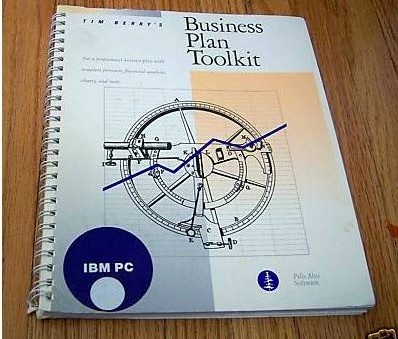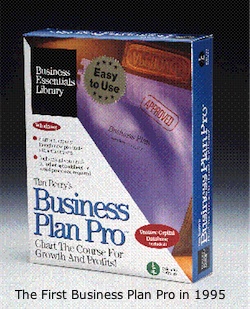I was asked how I started Palo Alto Software.
How? Slowly, carefully, bolstered by good product and reviews that validated, doing a lot of coding and documentation myself, and not spending money we didn’t have.
Spreadsheet templates
It started as spreadsheet templates. The first of those was published in 1984 to accompany a book “How to Develop Your Business Plan,” published by Oasis Press. In 1988 I separated from that book, and redid the templates to accompany my own book when I published “Business Plan Toolkit,” released in MacWorld January 1988. All of these early products were 100% my work, my spreadsheet macros and my documentation. It helped to have a diverse background, including 10 years as a professional journalist, foreign correspondent in Mexico City, plus a Stanford MBA. I could write about business so (people told me) others could understand.

I released ‘Business Plan Toolkit’ in January of 1988 at the San Francisco MacWorld exhibit. Laura and Sabrina shared the booth duty with me.
Funded mostly by consulting
Throughout the early years I kept up a healthy consulting practice doing business plans for some startups, and that plus market research and strategy consulting for some larger high tech companies, plus workshops on business planning for dealers of high tech companies. Apple was by far my best client, with repeat business in consulting on business planning from the beginning until 1994 (Hector Saldaña was a steady client for years, and a supporter of the business idea, and informal advisor). The consulting supported marketing expenses. There was no Internet to speak of until 1995, so the early marketing was a combination of small ads in the back of magazines and product reviews in major computer magazines. I did about $1.4 million worth of consulting for Apple Computer between 1982 and 1994.
During the consulting years I never lost site of the main goal of building my own business. I was sacrificing consulting revenues to prop up products. My mantra was “I want to sell boxes, not hours.”
When we moved it from Palo Alto to Eugene OR in 1992, I had three early equity shareholders (1% each) who agreed to surrender their shares because there was no value in them. One of them was my brother, Chip.
There is another chapter here on the darkness before dawn in 1994, when all seemed lost; and how I created Business Plan Pro to snatch victory from the jaws of defeat. in 1995 PAS gained critical mass with Business Plan Pro so I was able to stop consulting and dedicate myself to the business. We grew quickly to more than $5 million annual revenues by 2000.

